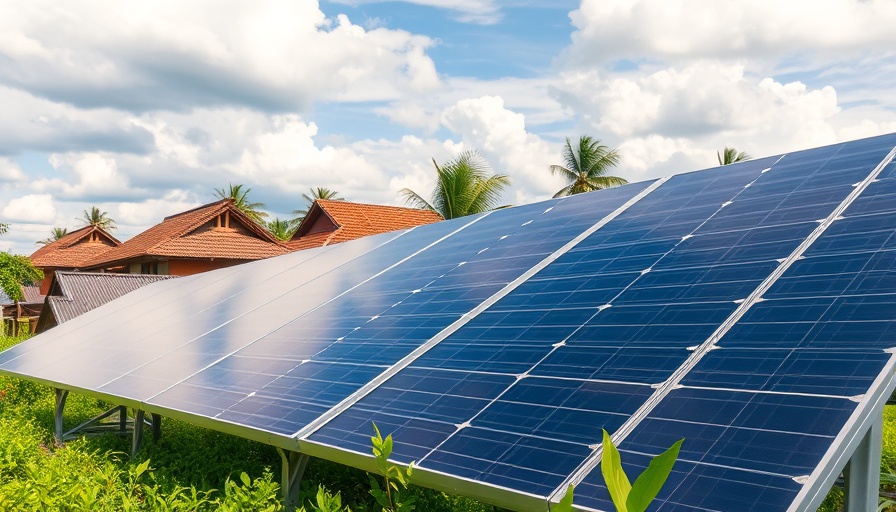
Unlocking the Potential of Renewable Energy Investments in Indonesia
Indonesia is on the cusp of a significant transformation in its energy sector. A recent report highlights that enabling a shared transmission network could usher in up to US$150 billion in renewable energy investments. This innovative approach could revamp the state utility—PT Perusahaan Listrik Negara (PLN)—while attracting private investments without stretching the state budget. As the country aims to boost its renewable generation capacity by an impressive 75 gigawatts by 2040, the focus on attracting private capital is crucial for its success.
Understanding Power Wheeling: A Game Changer
At the heart of this proposed shift is a mechanism referred to as power wheeling. This system allows non-utility stakeholders to utilize Indonesia's public transmission infrastructure, facilitating access to renewable energy sources directly from generation sites. By implementing this shared access, private energy producers can efficiently deliver power to consumers, significantly enhancing market access and encouraging the growth of clean energy. The financial implications of such a system could cover the estimated US$5 billion needed annually for power generation, creating a much-needed bridge for the US$146 billion investment gap to achieve Indonesia's 2030 climate goals.
Why Now? The Case for Immediate Action
As the clock ticks towards 2030, Indonesia's renewable energy landscape is under pressure. According to experts, the country currently has a marginal renewable energy pipeline. There needs to be an influx of investments towards vital sectors such as solar and wind energy. Power wheeling not only represents a viable solution but also a strategy that has proven successful in neighboring countries like Vietnam and Malaysia, where similar systems have catalyzed growth in the renewable energy sector and boosted international competitiveness.
Climate Change: A Driving Force Behind Investment
Indonesia's push for renewable energy investments can not be divorced from the global narrative on climate change. By creating a sustainable and eco-friendly energy infrastructure, the nation takes a vital step in combatting climate challenges while moving towards a more sustainable future. This transition is not merely a national ambition but aligns with a wider trend of environmental conservation and responsible consumption practices globally. Companies, particularly those linked with RE100, are increasingly embracing renewable energy within their supply chains to meet sustainability targets.
Building a Community and Sustainable Ecosystem
The introduction of shared transmission networks fosters a sense of community among stakeholders. It encourages collaboration between state utilities, private investors, and consumers, all driving towards the common goal of a green economy. By creating an environment where renewable energy is not only accessible but also economically viable, the initiative supports job creation in fields related to green technology and sustainable practices, ultimately benefiting the broader community.
Moving Forward: Decisions for a Sustainable Future
As Indonesia navigates through this transformational phase, stakeholders must prioritize actionable insights to ensure successful implementation. Embracing renewable resources not only serves economic interests but also reflects a commitment to ethical consumerism and downscaling carbon footprints, thus promoting a legacy of green living. Investors, policymakers, and citizens alike have crucial roles to play in steering this transition towards a more sustainable and eco-conscious lifestyle.
Conclusion - The Urgency of the Matter
The opportunity at hand is substantial. With a shared transmission network, Indonesia stands to attract significant private investments while transitioning to a more sustainable energy framework. This initiative aligns with pressing climate goals and embodies community aspirations for a greener and more resilient future. As we advocate for energy solutions that are both economically viable and environmentally supportive, let’s embrace the potential of power wheeling to forge a path forward.
 Add Row
Add Row  Add
Add 



Write A Comment